Teen Substance Abuse Statistics 2023
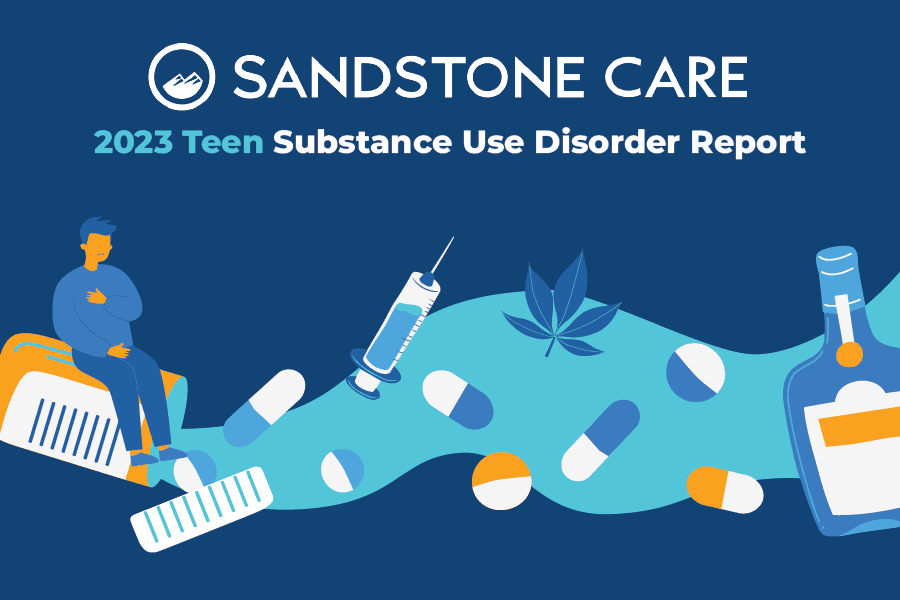

Substance use among teenagers in the United States is rapidly changing. By recognizing and keeping an eye on new trends, we can take proactive steps to address problems in our communities. It’s important for everyone, whether you’re a healthcare provider adapting your treatment methods, a journalist providing accurate information, or a parent learning how to spot warning signs in your child, to stay informed. Having the most recent and reliable information gives us the power to make choices that support the well-being of our families and communities.
By combining the results of Sandstone’s original research, which included an online survey taken by teenagers, with the latest drug abuse statistics from medical associations across the United States, this report offers unique insights into the substance use landscape in 2023. The survey specifically aimed to gauge teenagers’ substance use and whether they should consider seeking treatment, providing valuable information about their emotional and habitual state.
Substance Use Disorder, as defined by the DSM-V, involves patterns of symptoms caused by the continued use of a substance despite its negative effects. By examining substance usage patterns, we can gain insights into the risk factors that contribute to Substance Use Disorder in the United States.
Sandstone Care’s 2023 research project involved an online survey that focused on assessing mental health and substance use symptoms. The survey included questions about concerns related to substance use, such as feelings of isolation, using substances as a coping mechanism, loss of interest, and mood changes. Participants had the option to fill out the survey either for themselves or on behalf of a loved one.
Responses were carefully tracked and categorized as either self-reports or reports completed on behalf of loved ones.
The survey was designed to assess substance use and mental health struggles by using a five-point scale. The scale ranged from least concern (one) to most concern (six).
Sandstone’s clinical team suggests that answering “yes” to 3 or more of the 6 questions below suggests the need for considering treatment options.
Our research focuses on the personal observations of participants, which allows unique insights into the mental health needs of our community. While intake statistics and hospitalizations provide essential information, those numbers are limited to identifying severe cases.
By allowing participants to respond to the substance use, social, and emotional changes that they have observed in themselves or their loved ones, Sandstone’s research can collect results from across the spectrum of substance use experiences.
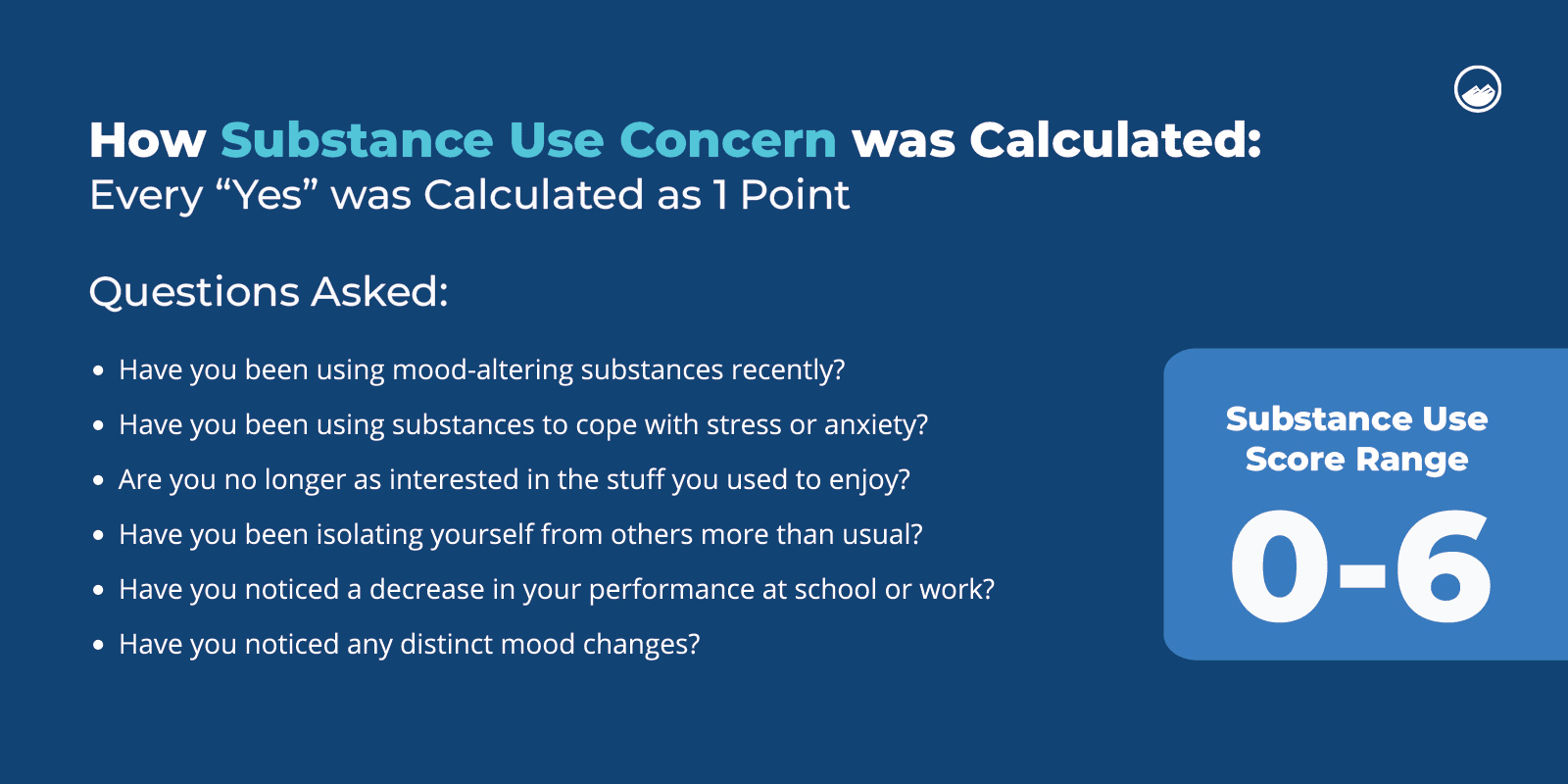
Teenagers and high school students face unique circumstances that can challenge their well-being and development. Adjusting socially, navigating complex emotions, and feeling misunderstood are common during adolescence. These distinct experiences can drastically impact the relationship between teens and substance use. Young people are particularly susceptible to developing Substance Use Disorder due to a combination of factors. The influence of new social circles and the desire to fit in can drive them to experiment with substances. Teenage brains are still developing, leaving them vulnerable to developing dependencies and addictions that can last well into adulthood.
One prominent risk factor observed among adolescents is the experience of isolation and loneliness. Sandstone Care’s findings revealed that feelings of isolation ranked as the second-highest recorded symptom among teen participants. Adolescents who feel disconnected from their peers and support systems are more vulnerable to seeking solace through substance use.
Sandstone Care’s research revealed that out of the teens who reported using altering substances, over 65% of them also reported experiencing all signs of mental health struggles. This highlights the intricate connection between substance use and mental health challenges in teenagers.
Sandstone Care’s findings indicated that parents and caregivers, on average, identified the most signs of substance use issues in their teens, with an average score of 5.35 out of 6.
However, it is important to note that while self-reported instances of substance use were lower than other symptoms, factors such as isolation and mood changes were more prevalent across the board. When the test was completed by a concerned loved one, all findings—whether related to substance use or other symptoms—were given equal weight.
This underscores that the perspectives of loved ones can provide valuable insights into an adolescent’s overall well-being.
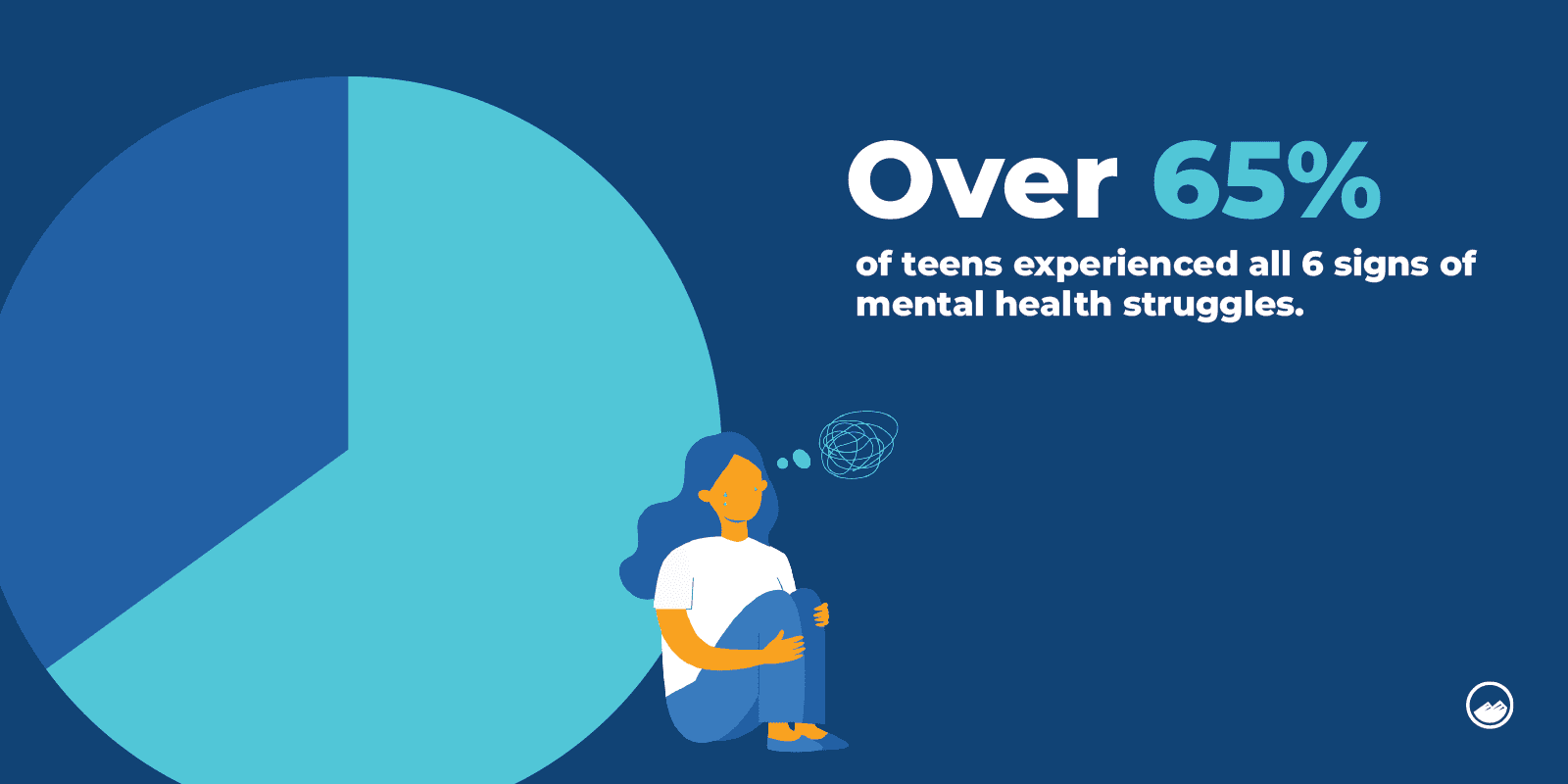
Studies have shown that the teenage years are a critical period when it comes to substance use. Research from the National Institutes of Health (NIH) found that most adults with substance abuse disorders started using during their teenage years. Additionally, the Centers for Disease Control and Prevention (CDC) discovered that about 15% of high school students reported using drugs like cocaine or heroin. Shockingly, the CDC also revealed that 14% of teenagers were misusing prescription opioids, which has been linked to higher rates of risky behaviors, dating violence, and even suicide.
The COVID-19 pandemic had some unexpected effects on substance use among teenagers. According to the NIH, overall substance use rates decreased among middle and high school students during the pandemic. As in-person instruction resumed in 2022, substance use rates remained lower than before the pandemic. However, there was a concerning increase of nearly 300% in opioid use among teenagers, as reported by the American Academy of Pediatrics.
It is crucial to address misconceptions and educate teenagers about the risks associated with substance use. A study by the Substance Abuse and Mental Health Services Administration (SAMHSA) found that 57% of high school students do not perceive excessive drinking as harmful.
According to the National Institute of Health (NIH), approximately 25% of teenagers are involved in underage drinking. The NIH also found that 50% of 12th graders were involved with binge drinking last year in 2022.
Drinking and illicit drug use are most common among the young adult age group, but many of young adults began their alcohol abuse during their teenage years.
Several risk factors contribute to heavy drinking among teenagers such as mental health challenges, social stressors, and major life transitions. This stage coincides with crucial brain development, making teenagers particularly vulnerable to long-term impacts such as alcohol use disorder.
According to the CDC, Mixing alcohol with other drugs can significantly increase the likelihood of drug overdose. The combination of substances can have synergistic effects on the body, leading to severe health complications and potentially life-threatening situations. Using illegal drugs with alcohol can also increase other risk-taking behaviors.
Prolonged alcohol use among teenagers can result in various health problems. These include liver damage, cardiovascular issues, compromised immune function, increased susceptibility to mental health disorders, impaired cognitive abilities, and disrupted emotional development.
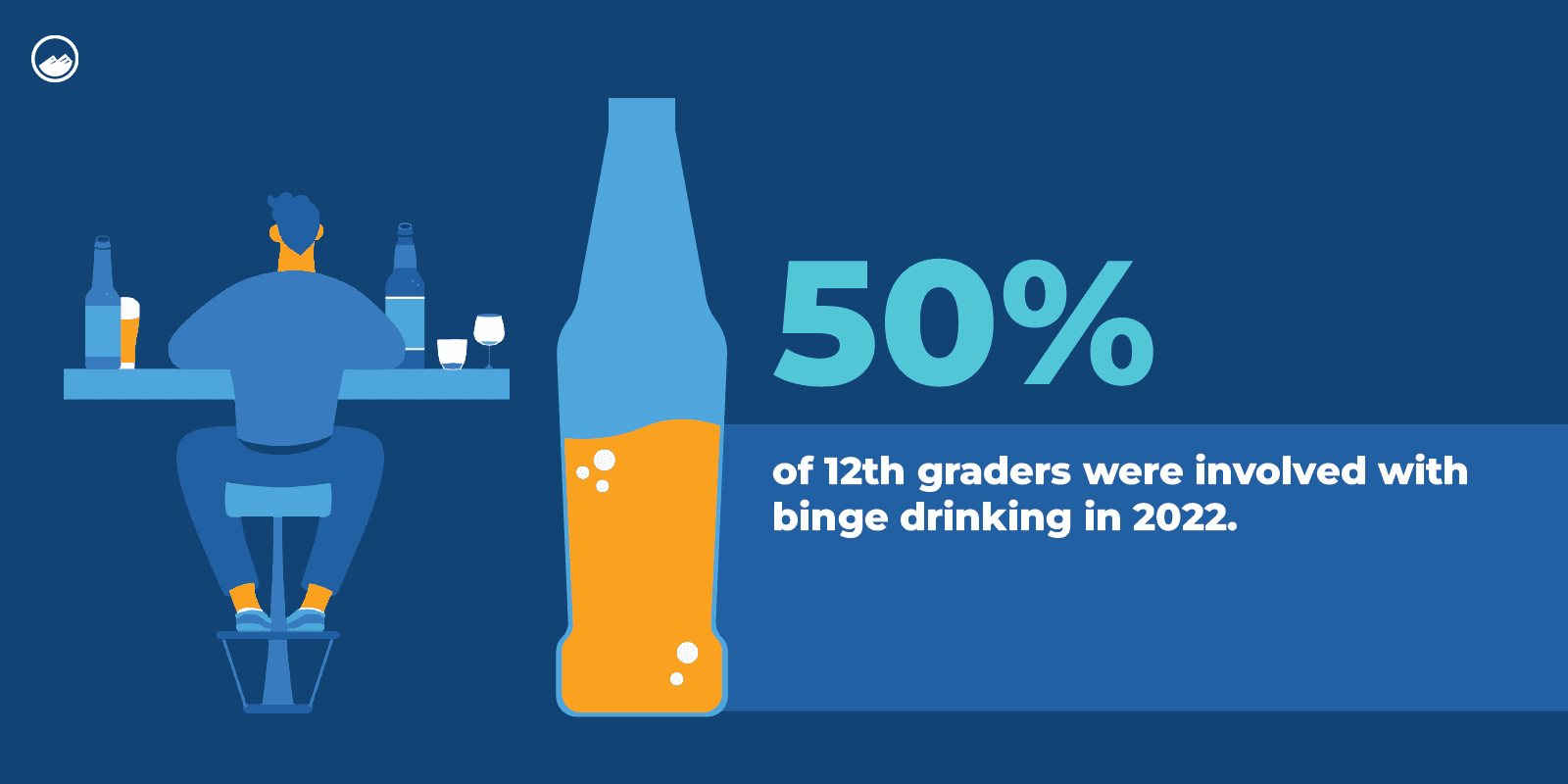
Prescription opioids are medications commonly used for pain management but are also prone to misuse. This has led to a significant rise in opioid abuse, identified by SAMHSA as one of the fastest-growing drug problems in the United States. The misuse of painkillers or prescription medications can lead to long-term damage to the mind and body.
Fentanyl, a potent synthetic opioid, has a strong connection to the opioid crisis. In 2021, the CDC found that 77% of adolescent overdose deaths were associated with fentanyl. Notably, during the pandemic, while overall substance use decreased, overdose deaths increased due to the potency of fentanyl.
According to the CDC, over the past year, overdose deaths from prescription opioids have surged by 109%. This alarming increase in overdose deaths highlights the urgent need to address the misuse and abuse of prescription opioids among teenagers.
Tobacco use is often associated with older generations, however, new forms of nicotine, smoking, and tobacco use have taken a strong hold among adolescents. The FDA found that in 2022, more than a quarter of American teens use e-cigarettes.
Vaping and other types of electronic cigarettes are often marketed to younger groups through advertising and popular flavors. The CDC notes that any form of nicotine is damaging, especially to a young developing brain.
Cannabis use is also incredibly common among teenagers and is frequently used with alcohol. As noted previously in this report, the risk of long-term addiction is especially high among 12 to 30-year-olds. Habits that start during adolescence and young adulthood may end up becoming lifelong.
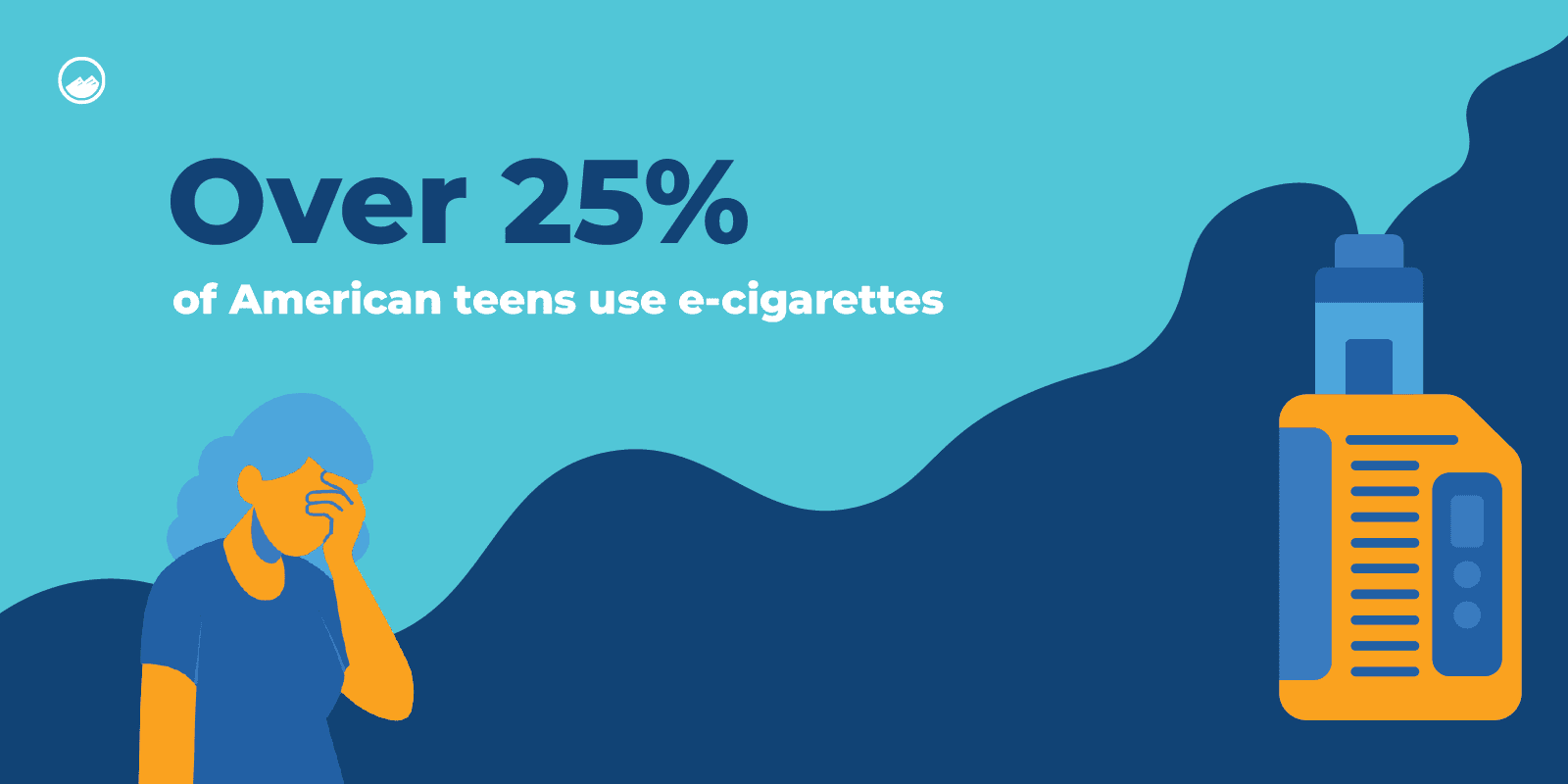
As we’ve seen throughout this report, teenagers have unique circumstances, challenges, and risk factors when it comes to substance use. Treatment programs can be most effective when they can empower teenagers with the skills they need most.
Tailored treatment programs for young people play a significant role in ensuring effective and appropriate care. Providers who are up to date on the latest evidence-based treatments are essential in helping teenagers overcome substance use challenges.
Sandstone’s research confirms that mental health issues and substance use often work with each other to exacerbate the challenges of addiction. Treatment programs that focus on dual diagnosis, behavioral health, and promoting holistic wellness give patients a fighting chance for long-term recovery.
The survey’s findings also highlight the critical role that parents and caregivers play in identifying signs of addiction in their teenagers. Treatment programs should prioritize partnerships with caregivers who have key insights into the needs, challenges, and goals of the patient.
Sandstone offers an age-specific and evidence-based continuum of care for teenagers struggling with substance use. Our treatment programs are specifically designed to meet the unique needs of young individuals, ensuring that they receive appropriate care and support. Sandstone aims to provide effective treatment options that have been scientifically proven to help your teenager feel like themselves again.